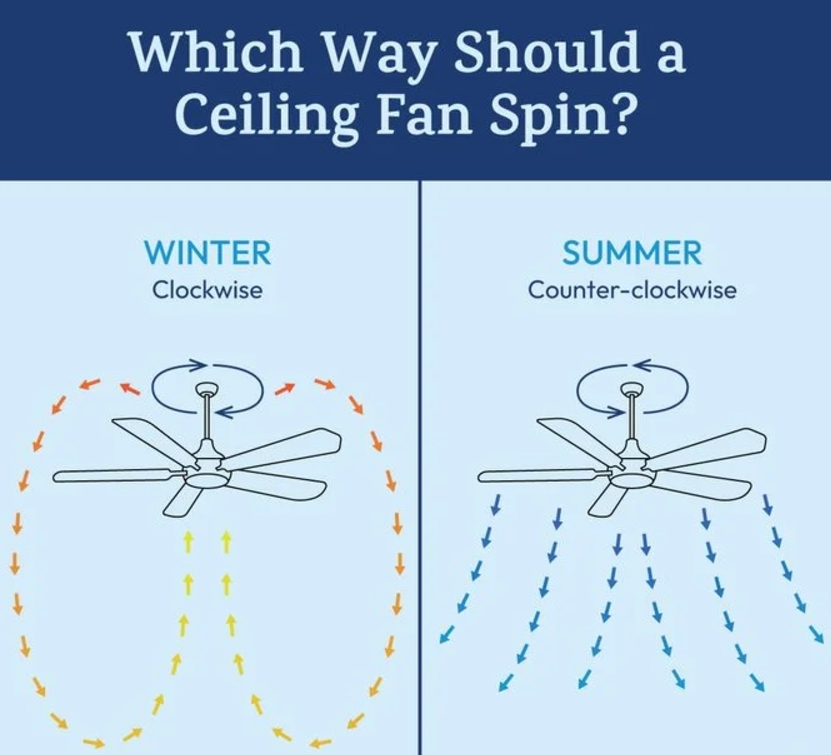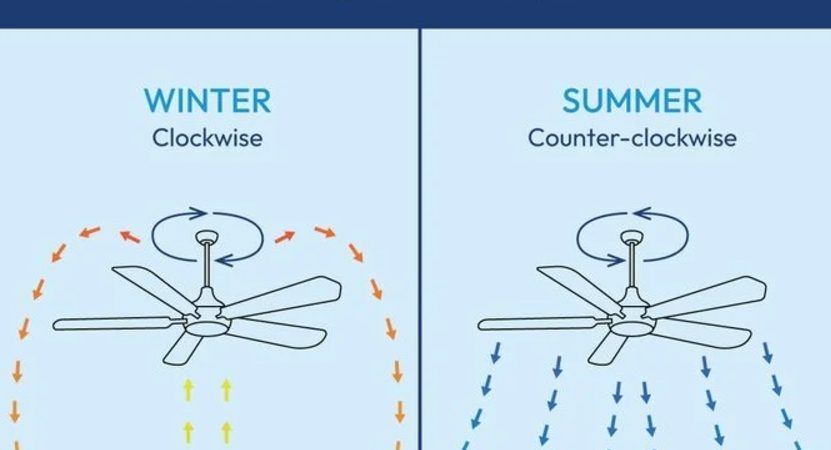How to Use Your Ceiling Fan to Stay Comfortable Year-Round: Expert Tips
A ceiling fan can be your secret weapon for staying comfortable in both winter and summer—if it’s spinning in the right direction. Whether you’re trying to stay cool in the summer heat or distribute warmth during winter, the direction of your fan blades can make a world of difference. Here’s how to get the most out of your ceiling fan all year long.
Why Ceiling Fan Direction Matters
Believe it or not, the direction your ceiling fan spins plays a huge role in controlling the air flow in your home. “Think of it like how an airplane generates lift,” says contractor Ryan Meagher. “When your fan spins in one direction, it lifts the air, and when you reverse it, it pushes the air downward.” This airflow trick helps with cooling in the summer and warming in the winter—if you use it right.
Summer Mode: Keep It Cool with a Breeze
During the hot summer months, your main goal is to feel the breeze. To get that refreshing wind, set your fan to spin counterclockwise (the most common setting). This pushes air down, creating a cool, pleasant breeze that can make a room feel significantly cooler without the need for AC.
The key here is ensuring that the leading edges of the blades are higher than the trailing edges. This way, the air flows downward, delivering that perfect summer breeze you crave.

Winter Mode: Spread the Warmth
In winter, your goal is to circulate warm air without feeling a draft. As we all know, warm air rises, so if your fan is still set to summer mode, it’s just pushing the cool air down. During the winter months, set your fan to spin clockwise. This will draw cooler air up and push the warmer air from the ceiling down toward the living area. That way, you’re not wasting all the warm air trapped near the ceiling, and your whole room stays more evenly heated.
Which Room Should You Use a Ceiling Fan In?
While a ceiling fan works well in any room, it’s particularly useful in larger, open spaces with high ceilings. “The clockwise setting in winter is effective in preventing heat from getting trapped at the top of the room,” says HVAC pro John Jordan. “In smaller rooms or spaces with less heating, even running the fan on low in counterclockwise mode can help distribute heat more evenly.”
For those living in humid climates, keeping your fan running counterclockwise year-round is a smart choice. It can enhance evaporation, making your space feel cooler without over-relying on air conditioning.
How to Change Your Ceiling Fan’s Direction
Changing the direction of your ceiling fan is easy, but it may require a ladder. Most fans have a small switch or pull chain near the motor that lets you toggle between summer and winter modes. Make sure the fan is off and completely still before you climb up to adjust it.
For newer or higher-end models, you might have a remote control that lets you change the spin direction or speed with the press of a button. Some wall switches also have settings for “forward” (summer) and “reverse” (winter).
Can’t Reverse Your Fan? Don’t Worry!
If you have an older ceiling fan that doesn’t have a reverse function, you can still make it work. Some fans let you adjust the pitch of the blades manually, using a wrench or screwdriver, but this will depend on the design of your fan.
By setting your ceiling fan in the right direction for each season, you can save on energy bills while keeping your home comfortable. Whether you’re enjoying a cool breeze in the summer or spreading cozy warmth in the winter, your ceiling fan can do more than just circulate air—it can transform the atmosphere of your entire room.



